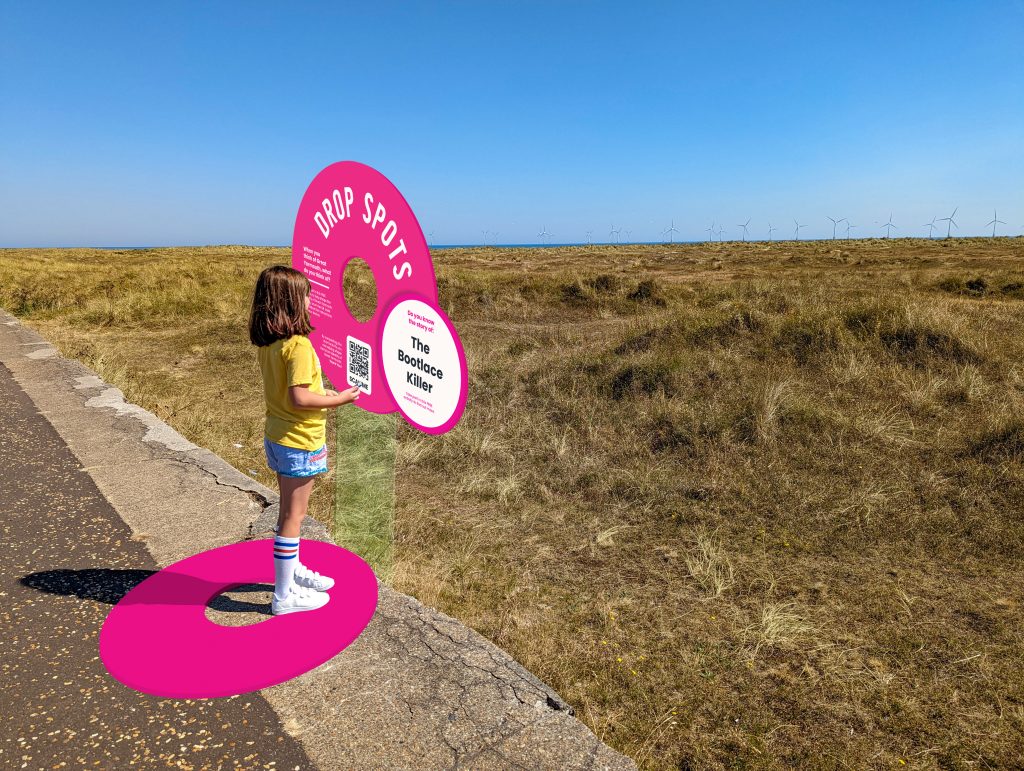
Here I have created a mock-up of what the drop spots installation would look like with a young user participating in the activity.
The hole in the middle of the roundel can act as a viewing point for younger people so that they can focus their attention on what they notice through the hole.
In creating this, I realised that there may not be an option for those who don’t have a digital device. Maybe a lo-fi version of the drop spots should also be put in place to cater for all?
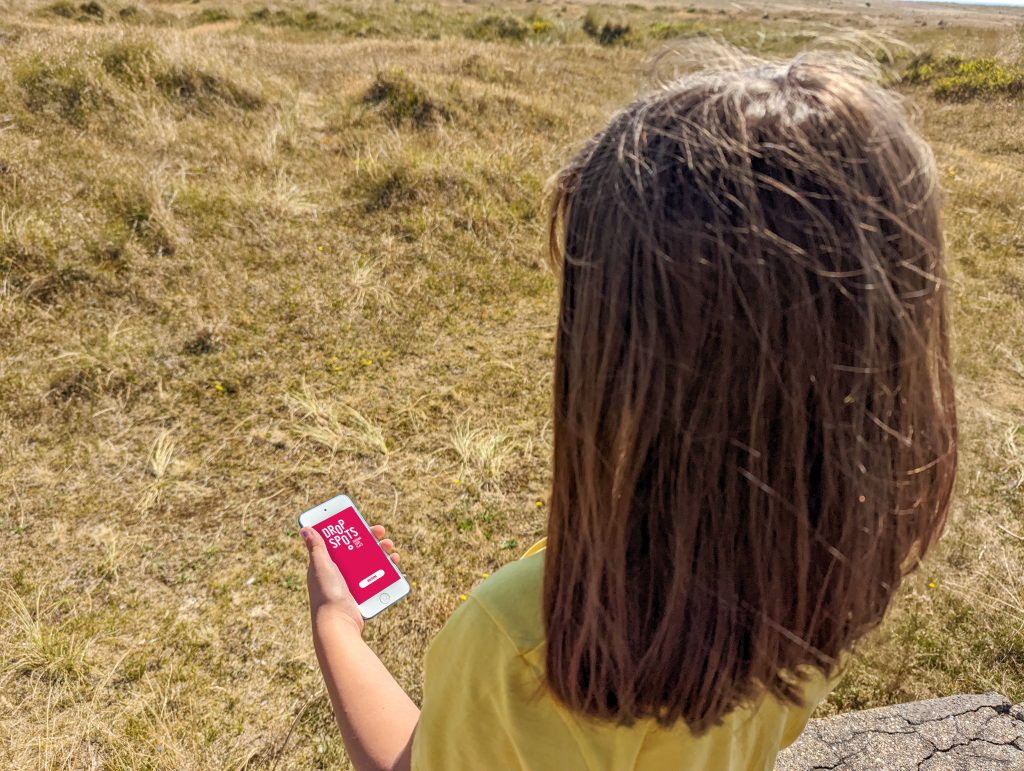
Lo-Fi Option
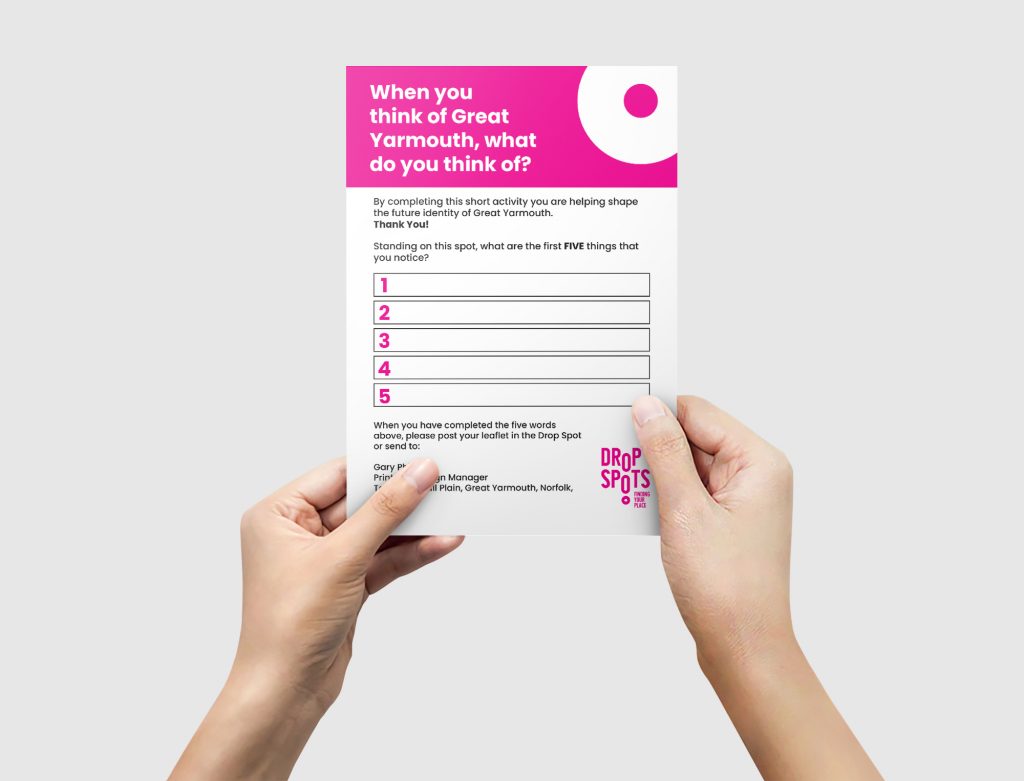
To make sure that everyone who wants to take part in the activity can, I have devised a leaflet and leaflet holder / lockable compartment which can be affixed to the central acrylic panel of the installation.
This means that even if you don’t have a mobile device to scan the QR code, then you can still take part.
The incentive – i.e. a historical story – can still be included, but on the reverse side of the leaflet.
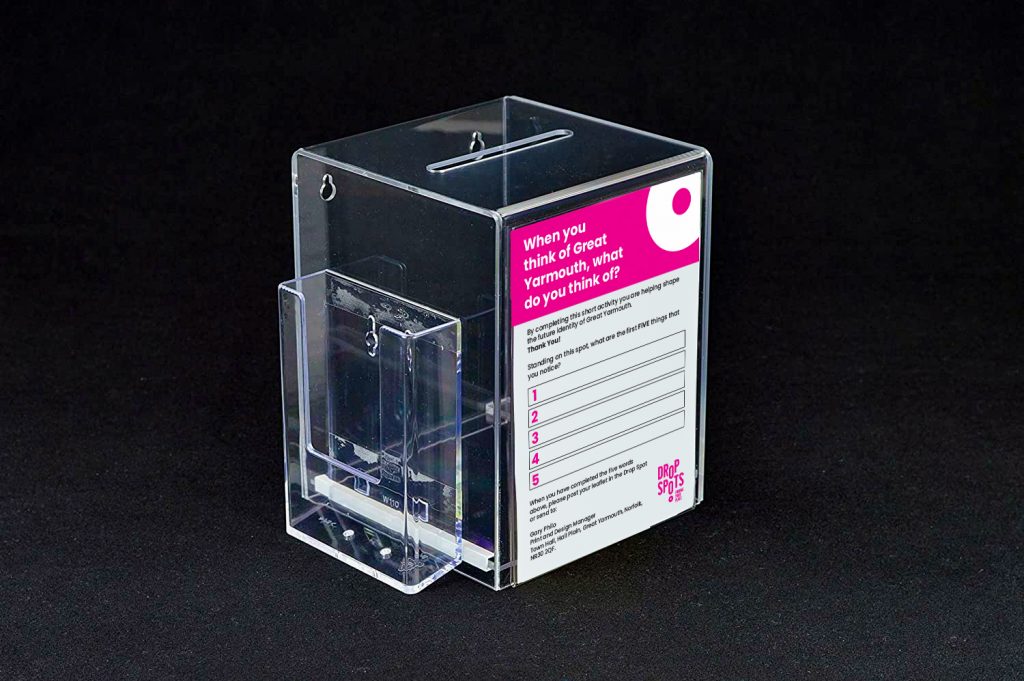
The Data
The real reward and purpose of this installation is to receive valuable data about what people think about Great Yarmouth. By analysing the data I will be able to ascertain which words are use most often and which sectors they belong to.
This will inform how the place identifies and, if implemented over a number of years, how perception changes and develops.
From my critical report, I surmised that the words used to describe Great Yarmouth fell into three categories:
Heritage
Tourism
Performance
It would be really interesting to see if this changes with a greater number of participants.
I also like how, in the example to the right, people will use specific and colloquial words to describe the place. These seem to have more emotion and feeling behind them.
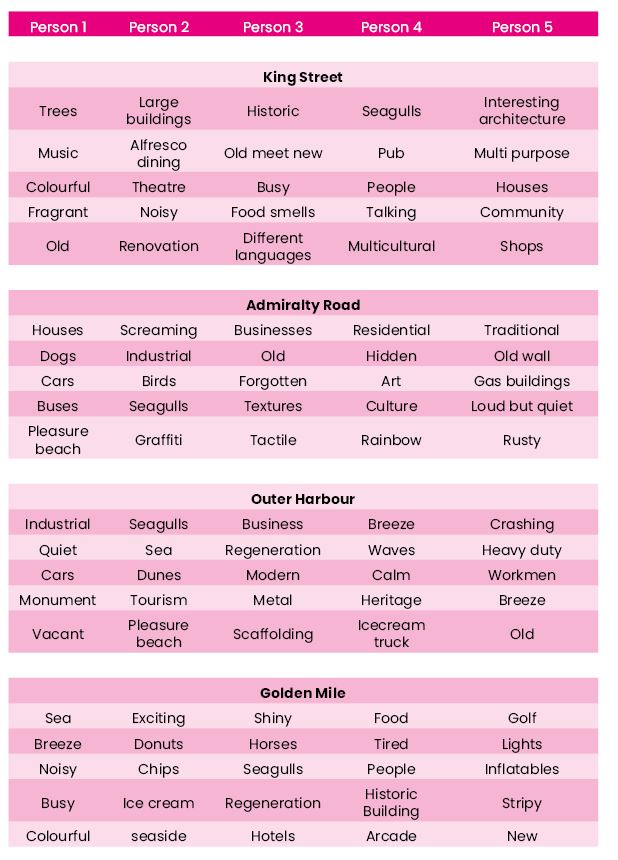
The Stories
As discussed previously, I want to offer participants a reason to complete the survey and think that historical stories is an excellent reward.
It gives them an insight into what has happened in specific spots across the town and will hopefully affect public perception in a positive way.
The Bootlace Killer
I was fortunate enough to research this story for one of my earlier projects.
It tells of a grusome murder which happened on a Great Yarmouth beach in the early 1900s. The victim was strangled with a bootlace – a crime her partner would be hung for. However, 10 years after their deaths, someone else was murdered under the same circumstances.
To read the full story of the Bootlace Killer please visit my blog:
www.garyphilodesign.co.uk/week-8-2/
Mr Nelson the Clown
This story happened in 1845 where a publicity stunt for a visiting circus went disatorously wrong. Mr Nelson was to be pulled through the water under a suspension bridge.
400 people attended the event which was too many for the bridge. It collapsed and 79 people drowned.
To read the full story of the Great Yarmouth Suspension Bridge Disaster please visit:
Ghost Signs
In my professional life, I got to work with the Heritage Action Zone Project Officer to produce a guide for the Ghost Signs of Great Yarmouth.
It details the signs which can be found around the town and the fascinating history that accompanies them.
To read the full story of Ghost Signs in Great Yarmouth please visit:
Word of the Year

Like Pantone’s colour of the year, I was thinking that the data received as part of this project could inform a ‘word of the year’.
This could be the word that is used by people the most as part of the survey.
This in turn could then be used to create a range of merchandise which could be applied to t-shirts, mugs, magnets – things you could find at the Tourist Information Centre.
It would then help create a buzz around the place. If Great Yarmouth’s word of the year was ‘Ice Cream’ wouldn’t you want to visit and try one?
Physical Installation
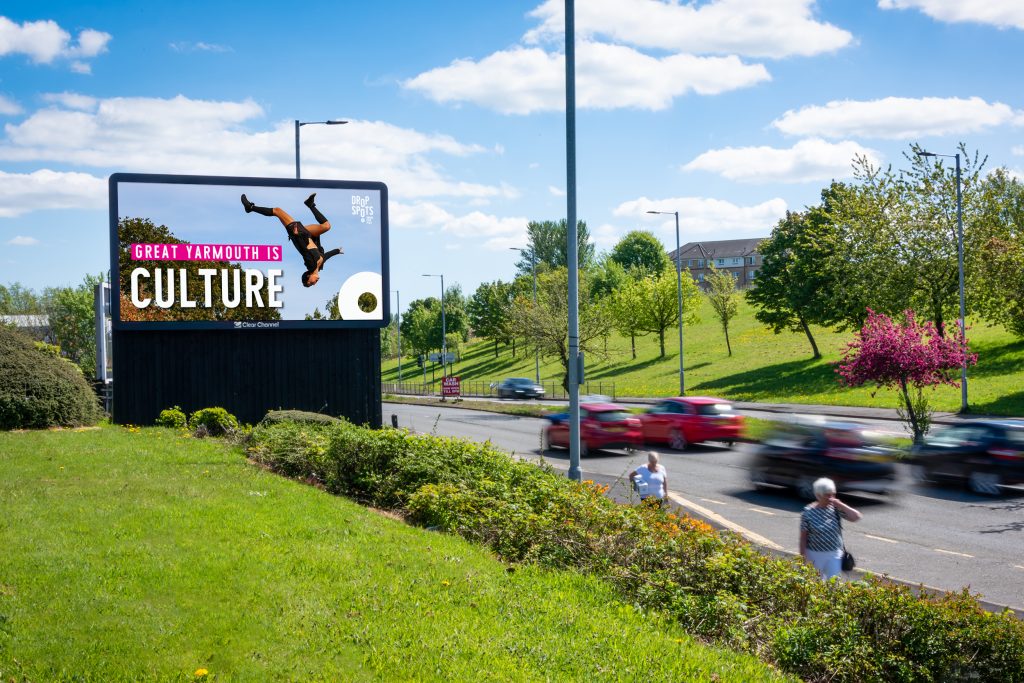
Another idea of mine was to have the data feed a billboard with the most used words.
It is a bit dangerous because the words that appear may not all be positive. But at least it is honest and created by a factual process without bias.
Even if the words that were displayed were negative, perhaps it would be the catalyst for the community to effect positive change?
Tone of Voice
Tone clarifies and conveys meaning. If you have misunderstood the identity of a place or people’s perceptions of it, you may be barking up the wrong tree and using the wrong words / tone with them.
This will result in lower engaging social media posts, press releases and ultimately you will have little effect on the perception of a place.
By implementing the Drop Spots public installation as detailed above you will receive a clearer understanding of what people think of Great Yarmouth.
By understanding your audience you will be able to use a tone which resonates with them and allow you to create in a way which has a real positive impact on place identity and what people think about it.
This process will highlight what is unique to Great Yarmouth and provide those wanting to effect positive change with the vocabulary to do so.


Leave a Reply